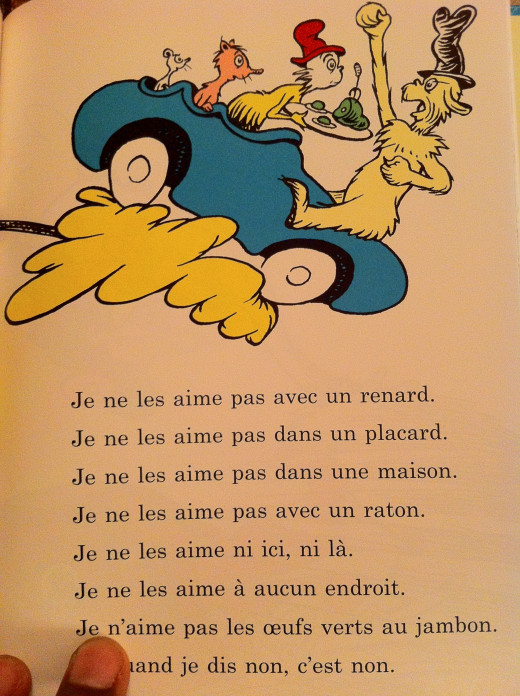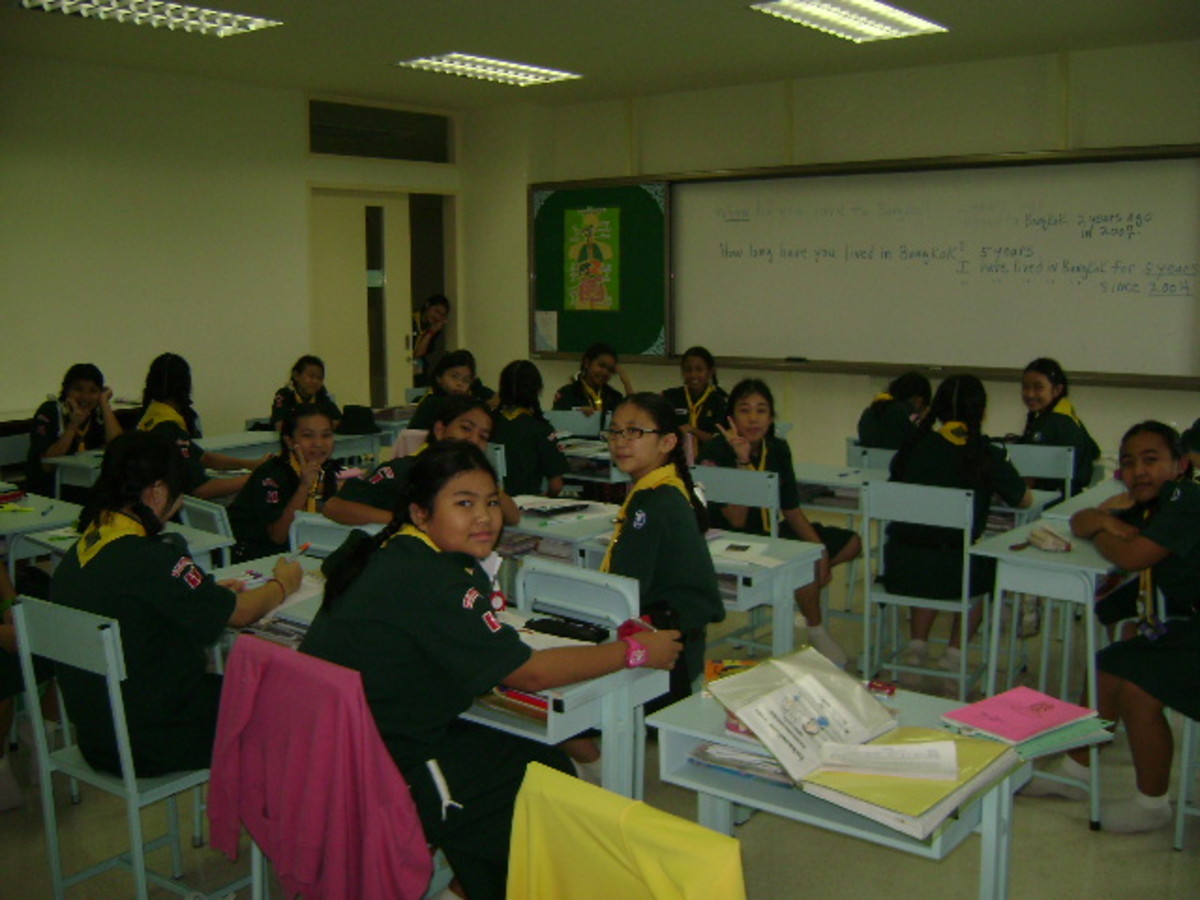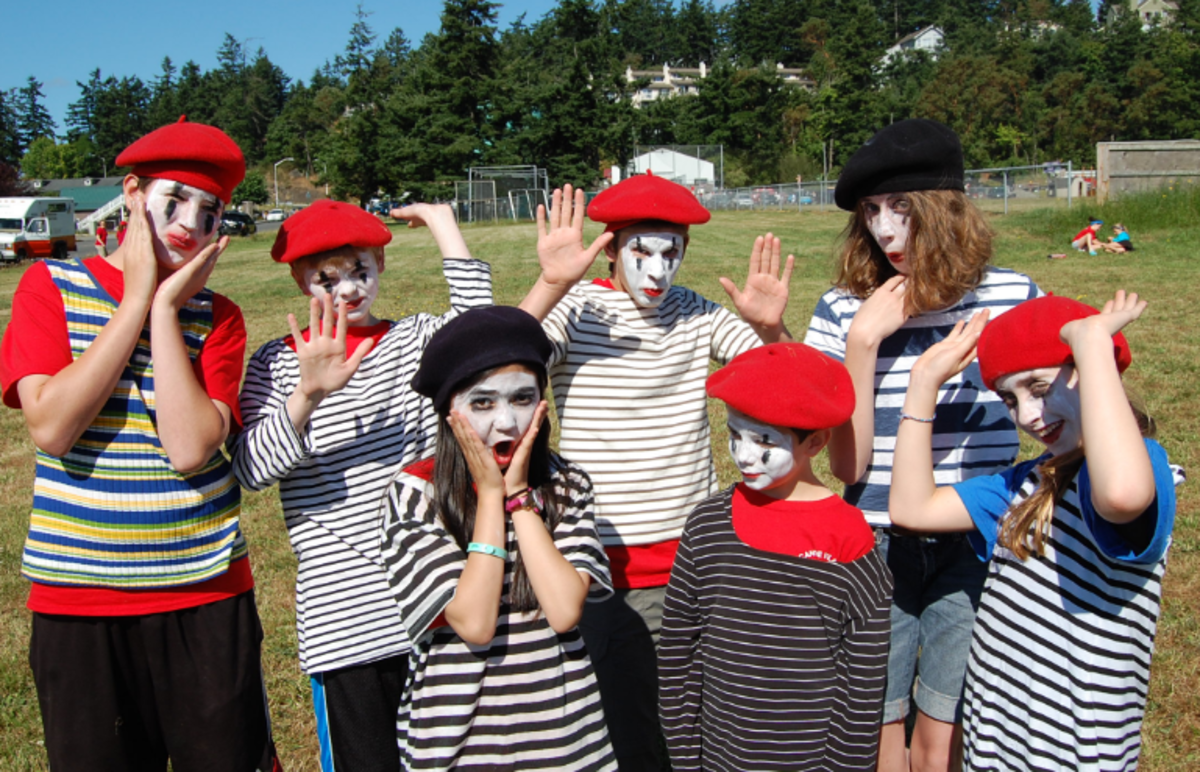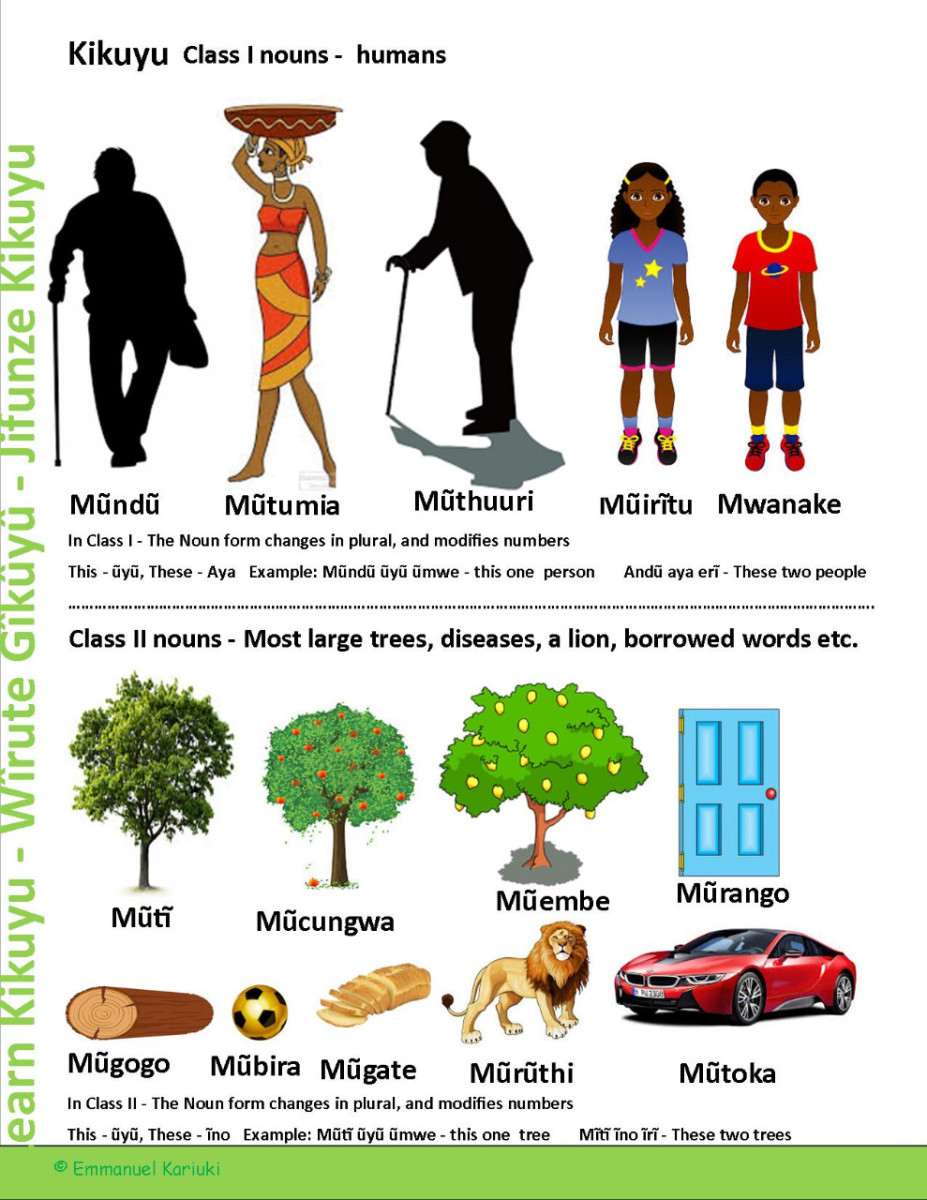Questions and Observations on Teaching a Foreign Language
What You'll Find Here
If you're teaching a foreign language or preparing to teach one, then you may find this page especially thought-provoking. Have you sat down to consider culture's role in language? What about grammar's role? Is grammar to be taught explicitly or implicitly? Do your classroom practices and assignments match your beliefs?
As you scroll down, you'll see my responses to certain pedagogical questions followed by two anonymous observations conducted in a foreign language classroom. How does your classroom compare?


Discussion Topics
1. Meaningful Input: Is it important to language learning?
First of all, I really like the idea of getting to know the students at the beginning of the year in order to then tailor the class to them. It'll be a great way of getting them involved in their language-learning process, which may in turn reduce the amount of resistance or lack of interest in the classroom. Meaningful input/interaction is essential to true learning. For instance, to make our discussion of food more contextualized, I printed out French McDonald's menus for my French students. After discussing the euro, ways of ordering, etc., the students created skits in which they were interacting with a McDonald's cashier and ordering food. Though the skits were planned out, I often randomly entered the skits and usually caused some type of disruption, making the students speak spontaneously in their interaction with me. That was the exciting part!
I also believe that language immersion, like that found in studying abroad, greatly enhances a student's language competence. I just wish that study abroad was a resource that was more financially feasible for students. I am, however, a proponent of localized immersion experiences. For instance, the French department here offers a French immersion weekend. It's the next best thing to traveling abroad since it recreates that contextualized world of communicative language that is beneficial to real learning.
Lastly, I feel that it is essential that the students view the target language as an actual, living, breathing language. Though this sounds very basic, this concept quickly gets lost when language instruction becomes a classroom language by omitting true representations of the language--i.e., television broadcasts, radio broadcasts, advertisements, movies, songs, newspapers, etc. In addition to capturing the accompanying culture, true representations of the language show that the language is less something to be simply studied/learned and more something to be applied.
******************************************************************************************************
Do you try to regularly include culture in your lessons?
2. Culture: To include or not to include?
I see the importance of teaching culture in a language class. The culture just seems to fill the class out; otherwise, students would be learning the mechanics, and perhaps the pronunciation, of a language but would miss out on how the language actually works within the culture. In essence, it'd be like teaching a dead language. Now, I must admit that I haven't always carried this perspective. As an undergraduate, I was often annoyed by my teacher's insistence on "rambling" on French culture and political issues. To me, it seemed that she was wasting time just talking, and I was there to simply learn the language. But when I met students from France on campus, and especially when I first traveled to France, I was very grateful for my small knowledge of the culture. In addition to affecting what I said and how I said it, this knowledge also gave me pause to understand, accept, and respect variances in cultural perspectives.
Needless to say, when I taught French, I tried to teach culture and language. In my classroom, the greatest tool was the penpal correspondence between my students and a group of high school students from Etampes, France. As my students read their penpal letters, they grew to understand a few things:
1) that French students have some of the same interests as American students,
2) that communicating with students from a different culture was a unique opportunity that they could brag about,
3) that French students also made English grammar mistakes just as American students made French grammar mistakes, and
4) that language was a means of communication not just something to be studied.
We later exchanged videos of tours of our schools, so that each group was able to virtually enter the world of the other. Also, when a group of students from Etampes visited our city, my students really enjoyed that as well. I truly think that a penpal correspondence should be an element of each language class.
********************************************************************************************************

3. Teaching Grammar: Where and when should it fall?
Hmm...That's quite a conundrum. However, I think that in order to avoid falling into the grammar black hole where little else is taught, I would be hesitant with teaching grammar first. While grammar is definitely important, the phrase "teaching grammar first" seems to go contrary to our purpose of showing how language and culture contribute to one another. The way I see the structural natural of grammar--now that I'm thinking about it--, I feel that an explicit discussion of it belongs in the middle of a lesson (after the contextualized use of the grammatical feature but before the closing of its discussion in order to combine the foci of context and structure). I think doing this maintains for both the students and the teacher the primary focus of communication. As an out-of-the-way metaphor, this method is like introducing students to an apple:
STEP 1: Here's an apple. Taste it; it's food. Smell it. Manipulate it. Know that there are different kinds of apples.
STEP 2: Now learn the parts of the apple. It has skin, seeds, stem, core...Different apples have different flavors, sizes, growing conditions...
STEP 3: Now use your knowledge to do something with the apple. 1) Knowing that it's a fruit, you can eat it; but knowing that it contains seeds, you know not to eat the entire thing. 2) Knowing that there are different types, you know that a green apple tastes different from a red one; also, knowing that these types have specific growing conditions, you know that while a red apple may grow in one area, a green one may not.
I'm sure that that convoluted explanation only made matters worse. Whatever the case, I think grammar is a tool and should be taught as such.
********************************************************************************************************
4. Vocabulary: How to teach it without teaching it?
I noticed that word retrieval, along with noticing, hinges on the learner's level of interest and intrinsic motivation. S/he has to have some form of catalyst to ignite that noticing and retrieval. The challenging yet fun part for us as educators is encouraging the learners to take control their own learning and to begin--from the vocabulary and grammar legs of language learning--building connections between lexical and grammatical features.
I feel that when they step into the generative phase, mistakes are natural; after all, the generation seems to be a way of trying to see what puzzle pieces fit together in order to construct the bigger picture. When learners don't have all of the pieces, they will sometimes match things up that seem to fit because of their similar characteristics; however, when another piece is introduced, they may learn that their initial view was out of focus and that their new view--based on the new piece--holds stronger.
Therefore, I think that in order to lead students to the right meaning without just giving it to them, we must provide multiple meetings and contexts. The more opportunities they get to test/negotiate their meanings, the closer they should get to reaching the more accurate meaning. Right? So that means that we have to find multiple, meaningful meetings--something that I think can get difficult to hunt down or cook up. I do like the idea of serializing texts, though. I also think that writing compositions works well to, though I didn't even think about the various levels of involvement that are present in doing so.
********************************************************************************************************

5. Grammar/Vocabulary: How do you teach the basics without being so explicit?
I definitely believe that the fundamental verbs of a language serve also as vocabulary. However, I think that there is a way to teach these grammatical elements using the PACE or interactive model without teaching them explicitly. To account for the students' utter newness to the language, I feel that in order to do this effectively lies in the text selection. Since the students will know nothing about the language--outside of the cognates that they recognize--it wouldn't make sense to choose a complicated text at the beginning. Honestly, even certain children's texts might be too complex at the beginning.
Instead,--though it's not a truly authentic text--how about using a familiar text that has been translated into the target language? Right now, my mind is on Dr. Seuss's Green Eggs and Ham/ Les oeufs vert au jambon. The sentence structures are simple and repetitive, and the students' knowledge of the English version could serve as a bridge to the negotiation of meaning within its French counterpart. Therefore, "I am Sam" then can be seen as "Je suis Sam." While the students might not automatically associate je with I and suis witham, surely with the repetition of the famous structure "I do not like.../Je n'aime pas...) the students will be led to this association.
Also, one text can be used for multiple concepts. The French Green Eggs and Ham, for instance, can be used for teaching such grammatical features as subject-verb inversion in questions, the direct object les, the conditional tense, the future tense, negative forms (ne...pas, ne...ni...ni, ne...aucun), prepositions, and verbs like vouloir(to want), and pouvoir (to be able to).
So long story short, I feel that it is possible to teach the basics inductively--though it does seem like a roundabout way of doing so. It does take time, but maybe the level of student retention will compensate for that.

Classroom Observations
The following questions address two language class sessions that I observed. The level of instruction is first semester of college-level French. Since not every lesson is perfect and not all students respond to lessons identically, I try not to judge. Instead, I've simply answered the questions. The rest is up to you. Can you spot some strengths and weaknesses? Can you spot some similarities with your classroom?
OBSERVATION 1:
- How many activities does the instructor do during the 50-minute class? I believe that the instructor used about seven activities, some of which build off one another. For instance, the discussion/practice of faire came in the form of five activities, ultimately leading up to the interactive activity with partners.
- What is your estimation of teacher talk vs. student talk (timewise)? (i.e., how much input vs. negotiated interaction vs. output.) The instructor speaks roughly 80% of the time to the students’ 20%. The student talk is typically circumscribed to one-word/one-sentence responses and repetitions.
- Is the class conducted exclusively in L2 or does the instructor use some L1? Explain (why?, when?, for what purpose?) The majority of the class was conducted in French; the instructor usually switched to English to explain cultural aspects. Also, the directions to the classroom activities were usually written in English.
- How would you qualify the classroom climate (stressful, relaxed, non-threatening, etc.)? Though the classroom climate is non-threatening, not all students participate in the various activities—perhaps because of the low levels of accountability, interaction, and encouragement.
- What is the modality of classroom interaction [Initiation/Response/Evaluation (IRE) vs. Instructional Conversation (IC)]? The classroom interaction is driven by the IRE pattern. However, one partnered activity allowed the students to speak with other classmates about a few topics. Furthermore, following this activity, the instructor “interviews” a few students, going over what they discussed during the activity and expounding into a short, unscripted conversation.
- What kind of feedback takes place? Feedback typically comes in the form of such one/two-word responses as “très bien” and “excellent.” After receiving a correct student response, the instructor may also affirm the correctness by saying “oui” and repeating the response. While writing a response as the students spell it out to her, the instructor—after detecting an error—will then ask the students whether they are sure about the particular spelling.
- How do these activities fit within the communicative language teaching framework? The partnered activity and the follow-up teacher-student interview were two components of the lesson that fit within the communicative language teaching framework. The partnered activity was strong in that it gave all the students the opportunity to speak although they were not held accountable for doing so, and the teacher-student interview was strong in that it provided for a more realistic discourse although only a few students had the opportunity to participate.
- How do these activities fit in the situated practice /overt instruction/critical framing/transformed practice model? The activities presented in the lesson run heavy in the overt instruction aspect of the model. Only a small portion of the lesson—the partnered activity—is dedicated to using/applying the new knowledge in a real life context. Situated practice and critical framing, I believe, are absent from this lesson.
- How is grammar/vocabulary presented? Faire expressions are introduced to the students through sample sentences and accompanying TPR (Total Physical Response) that matches action. Je fais la vaisselle, for example, would have the instructor mimic washing dishes and have the students do the same. Here, no English is used. Later, the students see the expressions with their translations. To reinforce the learning of the new terms, the follow-up activity requires students to then identify what people in given photos are doing. Gender is taught explicitly by focusing on the word endings. The instructor presents various endings by gender and includes example words. For instance, for the feminine ending –té, the instructor uses la liberté, l’égalité, la fraternité. After going over the endings, students then are given opportunities to label the gender of orally provided words from the instructor with no help from the PowerPoint slide with the gender associations.
- To what extent (and how) is culture present in the classroom/activities? Brief discussions of culture come in during the word gender examination portion of the class. With the introduction of the ending –age, the instructor presents an image of Tintin as an example of a personnage, briefly explaining that he is a famous French character. Likewise, for –eau, the instructor presents an image of the Statue of Liberty as an example of a cadeau. After asking the students why the Statue of Liberty is a present, she then gave a brief explanation. Lastly, for –té, the instructor explains the meaning behind the French motto la liberté, l’égalité, la fraternité. However, overall, the presentation of culture was light.
Enjoy a music break from Flight of the Conchords

OBSERVATION 2:
General remarks
a) How many activities did the instructor go through over the 50-minute period? Over the 50-minute period, the instructor went through about six activities.
b) Was a warm-up activity used? No warm-up activity was used. The instructor began with a review of interrogative pronouns qui, que, and quoi.
c) What type of activities did the instructor conduct? Because this session was close to the final exam, the activities were meant to be reviews of already discussed material, mostly grammar and was designed to mimic the structure of the exam. Half of the class was dedicated to distinguishing between the interrogative pronouns. Related activities required the students to select either qu’ or qui or to write the question to a given answer (Example: Bart Simpson est sur le litàQui est-ce qui sur le lit?). Verb review activities required the students to both select the correct verb to be used in a sentence and conjugate it correctly. There also was a vrai/faux activity about French fashion. The final activity was a listening activity that required the students to write down the clothing descriptions that the instructor orally provided.
d) How long was each activity? Each activity generally ran 5-7 minutes long, with answer correction included. Additionally, because of the wealth of content to be reviewed, the latter activities seemed rushed through.
e) Were there clear transitions between activities? Because of the review structure, the activities requiring different skills—interrogative pronouns, verb conjugations, colors and clothing—typically had no natural, connected transition between them. Simply said, pouvoir and vouloir conjugations abruptly and speedily followed the interrogative pronoun activities.
f) Was there a clear overview for each activity? The activities had no overviews. For the latter activities, the instructor often did not explain the directions, thus leaving the students to read the directions themselves.
g) Were any of these activities organized as tasks? I would say that the “find the question” activities were the closest to being tasks, for they required the students to take in information, interpret it, and then construct the logical question associated with it.
h) Were visuals used during the activities? If so, how? Photos were used during the qu’ or qui activity to help the students determine the reference to an object or person. Pictures of clothing were also present in the review of color agreement; however, here, the pictures were not needed to complete the activity. After all, one does not need to see brown shoes to be able to choose between des chaussures marrons and des chaussures marron.
i) How was error correction – if any – handled? When the instructor heard pronunciation errors, she restated the students’ responses correctly without explicitly addressing the error. Other minor mistakes were also ignored. She did take time to address errors in skills needed for the exam. For instance, when a student used que instead of qui, the instructor asks him/her whether the particular noun was a person or thing. After the student identifies “a person,” s/he reasons that qui would be the correct response.
j) Were these activities teacher-fronted or communicative? Explain. The activities were all teacher-fronted. Though this was a review of what the students should already know, the instructor controlled the instruction; the students simply responded—mostly passively—to the instructor’s questions.
- What kind of pre-listening/pre-reading activities were provided? The instructor briefly stated the directions, asked whether anyone had questions, and began. a) What other type of scaffolding (or enabling objectives) was provided for each activity (if applicable)? During the listening activity, the instructor read each description twice and spoke only in isolated phrases instead of sentences. Therefore, instead of Camille porte un maillot de bain rose, she simply said un maillot de bain rose. b) Were models/examples given to allow students to perform the activity? If so, how (e.g., question-answer, written on the board, etc.)? No examples/models were given.
- What kind of post-listening/post-reading activities were provided? The listening activity required the students to write down the clothing descriptions that they heard. a) Were group activities included? No group activities were included. b) Were the materials personalized? The materials were not personalized. c) Did all students have the opportunity to speak or participate? Because the students were given only five different descriptions, only five students got the chance to share their responses in the whole-group review of the answers.
- Was a clear extension activity deployed (writing/speaking)? Aside from the final video project that will be due on the scheduled exam day, there was no extension activity included in the lesson.
So what do you think?

A Time to Reflect
Based on the responses, do your lessons resemble the two observed here?
In Closing...
I certainly hope that the above reading ignited thoughts in your mind about your approach to language teaching. If you would like to respond to the discussion topics, feel free to leave appropriate comments below.









